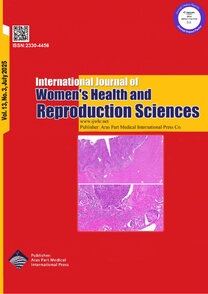| Review | |
| Ideal Fertility in Iran: A Systematic Review and Meta-analysis | |
| Hajiieh Bibi Razeghi Nasrabad1, Mohammad Jalal Abbasi-Shavazi2 | |
| 1National Population Studies and Comprehensive Management Institute, Iran 2Department of Demography, Faculty of Social Sciences, University of Tehran, Tehran, Iran; & Melbourne School of Population and Global Health, University of Melbourne, Melbourne, Australia |
|
|
IJWHR 2020; 8: 010-018 DOI: 10.15296/ijwhr.2020.02 Viewed : 9785 times Downloaded : 2750 times. Keywords : Ideal fertility, Preference, Fertility, Meta-analysis, Pooled correlation, Iran |
|
| Full Text(PDF) | Related Articles | |
| Abstract | |
Objectives: This study was conducted to estimate the mean ideal number of children and to determine the overall prevalence of childlessness, one child, two children, as well as three children and more as the ideal number of children in Iran. Further, the study investigated the effect size of the relationship between social factors and ideal fertility. Materials and Methods: To this end, a systematic review and meta-analysis was conducted on all studies on ideal fertility that were published from January 2000 to February 2018. Totally, 37 qualified papers and two national surveys were selected with a total sample size of 37,079 women. The degree of correlation between the ideal fertility and variables was calculated using Spearman?s correlation, Pearson?s correlation coefficient, and r by using MedCalc 17 software. Results: The pooled mean ideal fertility by the random effect was 2.25 in Iran. The results of the Cochran test and I2 statistics showed considerable heterogeneity regarding the prevalence of the ideal number of children (Q=1722.0911, P < 0.0001, and I2=97.62%). In addition, the proportions of childlessness, 1 child, 2 children, along with 3 children and more as the ideal parity were 0.83, 15.99, 56.092, and 22.26, respectively. The pooled correlation coefficients demonstrated that age, actual fertility, and the economic costs of children are the most important predictors of ideal fertility. Conclusions: Despite the differences in the actual fertility level in different regions of Iran, two children is the the predominant pattern of the number of desired children. This result implies a convergence of fertility ideals in Iran. If desirable conditions for childbearing are provided, fertility could be maintained at the replacement level. |
Cite By, Google Scholar
Online Submission System
 IJWHR ENDNOTE ® Style
IJWHR ENDNOTE ® Style
 Tutorials
Tutorials
 Publication Charge
Women's Reproductive Health Research Center
About Journal
Publication Charge
Women's Reproductive Health Research Center
About Journal
Aras Part Medical International Press Editor-in-Chief
Arash Khaki
Mertihan Kurdoglu Deputy Editor
Zafer Akan























